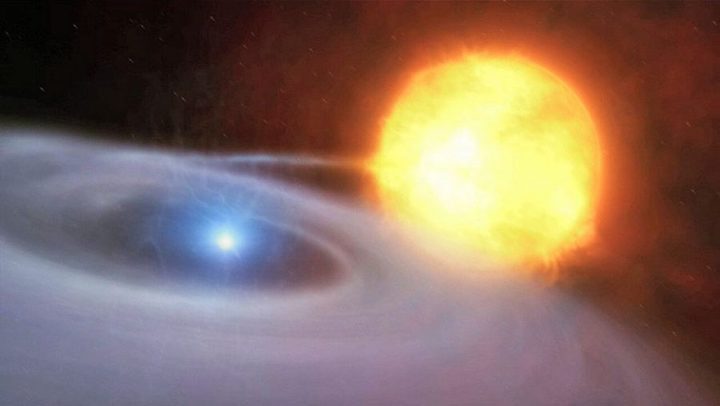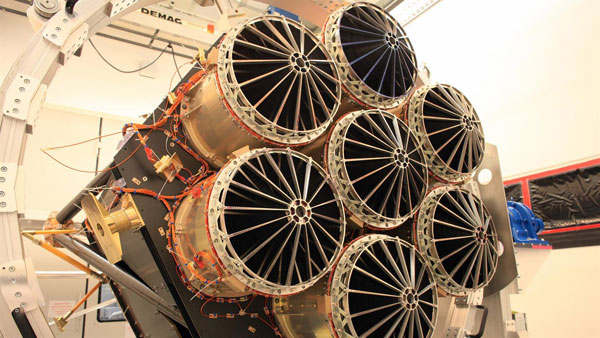13.05.2022
Astronomers have spotted the X-ray flash that precedes a nova. The brief flare is the first sign of a white dwarf erupting into a nuclear-fusion fireball.

For the first time, astronomers have spotted the X-ray flash that was issued as the entire surface of a distant stellar remnant ignited in a colossal fireball. The observation, reported in the May 12th issue of Nature, adds the last missing piece to the puzzle of white dwarfs gone nova.
A NEW STAR
On July 15, 2020, amateur astronomer Robert McNaught noticed a new star in the sky from his observatory in Australia. The nova, dubbed YZ Reticuli, ultimately brightened 1,500-fold to magnitude 3.7, making it clearly visible to the unaided eye for a few weeks before it faded back into obscurity.
Further observations showed the system to be a classical nova, consisting of a normal, hydrogen-fusing star and a white dwarf — a tiny heavyweight that packs a Sun’s worth of mass into an Earth’s amount of space. The two whip around each other every three hours, their orbit so tight that the white dwarf steals its stellar companion’s outer layers. Gas piles up on the white dwarf’s surface until, all at once, it ignites: The entire surface layer of hydrogen goes aflame in a runaway thermonuclear reaction.
The surface fusion was what created the visible light that astronomers monitored as the second-brightest nova of the decade. But even before the visible light spiked, the conflagration emitted a brief flash of X-rays. Predicted by theory, such a flash had never been recorded.
But in this case, the space telescope eROSITA just happened to be imaging in the right direction at just the right time to catch the 35.8-second flare. (The telescope, which completed four of its eight intended all-sky surveys, has entered safe mode since February 26th — a consequence of Russia’s invasion of Ukraine.)

P. Friedrich / MPE
Ole König (Friedrich-Alexander University, Germany) and team recognized the “now-you-see-it, now-you-don’t” X-ray source for what it was: the incendiary flash from a white dwarf going nova.
“Nothing even vaguely like this has ever been seen before for any nova or any cataclysmic variable,” says Bradley Schaefer (Louisiana State University), who was not involved in the study.
THE PHYSICS OF A FIREBALL
From the X-ray data, König’s team can paint a physical picture of the explosion that happened 8,250 light-years away.
Pressure was mounting as the gas piled up on top of the white dwarf. The accompanying increase in temperature (330,000K, or 590,000°F, about the temperature at the center of an atomic bomb) ignited surface-wide fusion. But fusion wasn't enough — the only way to relieve the pressure was for the white dwarf to blow its lid.
The ensuing fireball expanded quickly, becoming much bigger than the white dwarf itself. The layer of fusing hydrogen had already mushroomed to more than five times Earth’s girth by the time eROSITA observed it.
“This is really a very, very dynamic situation,” says team lead Ole König (Friedrich-Alexander University, Germany). The fireball might initially expand at several thousand kilometers per second, he explains, equivalent to millions of miles per hour. “The fact that we caught the event when it was still so close to the white dwarf was quite lucky.”
The detection of the X-ray flash validates long-established predictions for what occurs as novae burn. As such, it marks the last missing piece of the nova puzzle, since astronomers have already observed every other phase of nova explosions.
Exactly what the implications are for our understanding of white dwarfs and their explosive novae remains to be seen. “The discovery of a distinct and evocative new phenomenon is always exciting,” Schaefer says.
“This is a spectacular result!” agrees Simone Scaringi (Durham University, UK), who also wasn’t involved in the study. “Not only does it validate the fireball model, it also shows the power of X-ray surveys like eROSITA in catching such fast events in action. The detection of the X-ray flash will clearly aid in testing and refining the physical models yielding thermonuclear explosions.”
Quelle: Sky&Telescope

